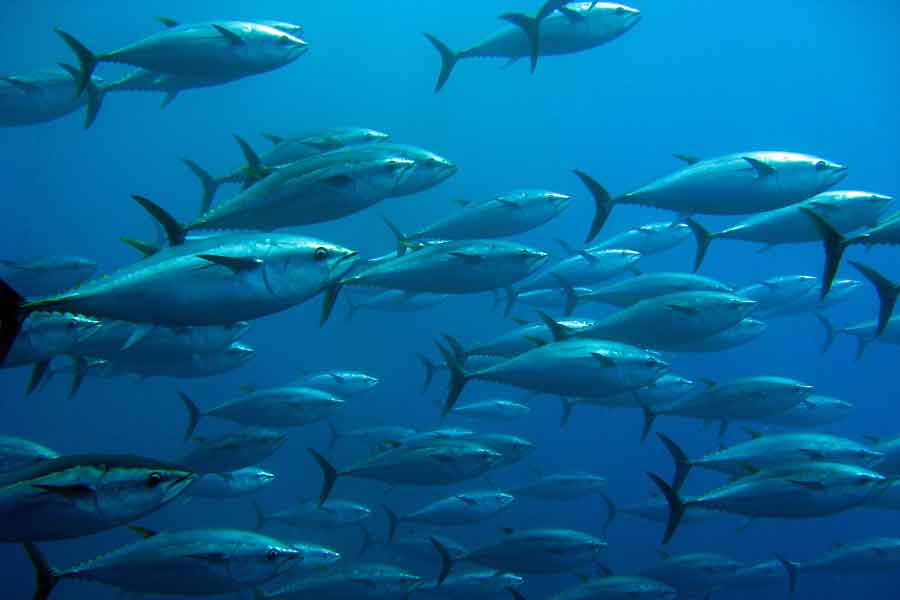
It is likely that inhabitants of large cities find it difficult to associate tuna with the filling of canned preserves in which it is commonly consumed around the world. In reality, it is a magnificent fish with excellent hydrodynamic shape that allows it to propel itself at high speeds in the sea.
The bluefin tuna is the largest of all tuna species. At one year of age, it weighs between 3 and 5 kg and measures approximately 60 cm; at five years old, it reaches 40 kg in weight and a length exceeding 1.35 meters. After fourteen years, it becomes a true giant, weighing over 400 kg and measuring more than 2.5 meters. Some authors mention exceptional tuna specimens reaching 4.5 meters and weighing 800 kg.
In terms of their diet, tuna are highly voracious predators. In the early stages of their life, they feed on planktonic organisms (zooplankton), and as they grow, they hunt larger prey such as mackerel, sardines, anchovies, herring, and squid. They do not have a preference for any of these prey and eagerly devour any that fall within their range.
Tuna can reach speeds of up to 88 kilometers per hour. A significant part of their ability to move at such speed can be attributed to the anatomical configuration of their tail, in which the rays of the forked caudal fin extend to the last vertebra. This arrangement provides the tail with a more powerful thrust than any other fish.
Due to their high metabolic rate and nervous disposition, tunas are difficult to capture alive and successfully transport to an aquarium or open tanks. Nevertheless, they are an important catch in the economy of many nations. A large bluefin tuna can reach the price of a luxury sports car in the Japanese market. In the early 1980s, it was estimated that there were 300,000 bluefin tuna specimens in the Atlantic. Twenty years later, their population is estimated to be only 15,000. This could be due not only to intensive fishing but also to the extensive fishing of the animals that tuna feed on.
«You cannot defend what you do not love, and you cannot love what you do not know.»

